Gilles Falquet
CUI
Handling Wikidata Qualifiers in Reasoning
Apr 06, 2023Abstract:Wikidata is a knowledge graph increasingly adopted by many communities for diverse applications. Wikidata statements are annotated with qualifier-value pairs that are used to depict information, such as the validity context of the statement, its causality, provenances, etc. Handling the qualifiers in reasoning is a challenging problem. When defining inference rules (in particular, rules on ontological properties (x subclass of y, z instance of x, etc.)), one must consider the qualifiers, as most of them participate in the semantics of the statements. This poses a complex problem because a) there is a massive number of qualifiers, and b) the qualifiers of the inferred statement are often a combination of the qualifiers in the rule condition. In this work, we propose to address this problem by a) defining a categorization of the qualifiers b) formalizing the Wikidata model with a many-sorted logical language; the sorts of this language are the qualifier categories. We couple this logic with an algebraic specification that provides a means for effectively handling qualifiers in inference rules. The work supports the expression of all current Wikidata ontological properties. Finally, we discuss the methodology for practically implementing the work and present a prototype implementation.
An ontology for the formalization and visualization of scientific knowledge
Jul 13, 2021



Abstract:The construction of an ontology of scientific knowledge objects, presented here, is part of the development of an approach oriented towards the visualization of scientific knowledge. It is motivated by the fact that the concepts that are used to organize scientific knowledge (theorem, law, experience, proof, etc.) appear in existing ontologies but that none of these ontologies is centered on this topic and presents them in a simple and easily understandable organization. This ontology has been constructed by 1) selecting concepts that appear in high level ontologies or in ontologies of knowledge objects of specific fields and 2) by interviewing scientists in different fields. We have aligned this ontology with some of the sources used, which has allowed us to verify its consistency with respect to them. The validation of the ontology consists in using it to formalize knowledge from various sources, which we have begun to do in the field of physics.
A Semantic Model for Historical Manuscripts
Feb 02, 2018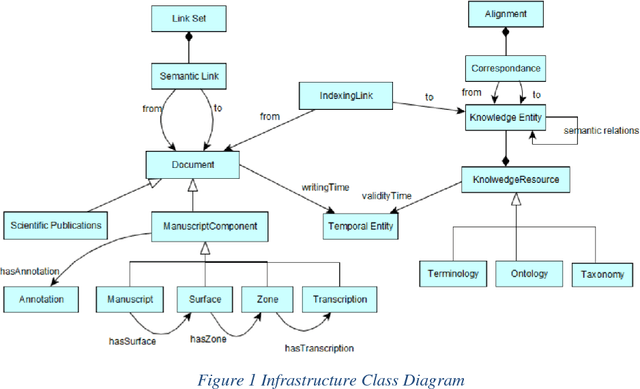
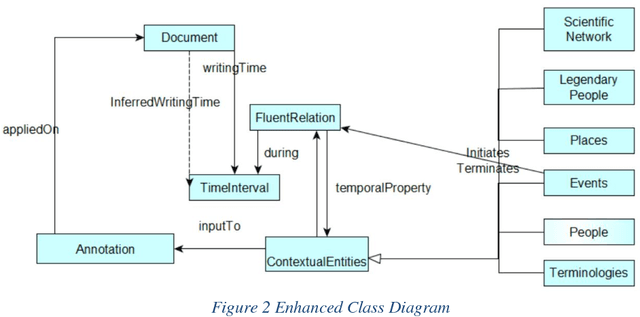
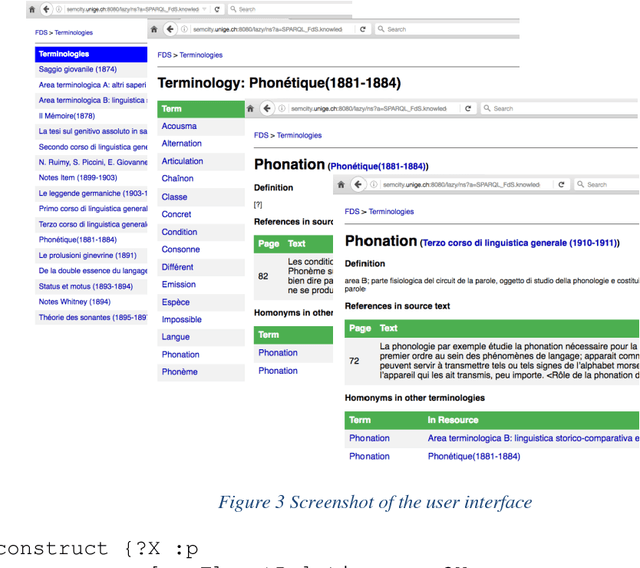
Abstract:The study and publication of historical scientific manuscripts are com- plex tasks that involve, among others, the explicit representation of the text mean- ings and reasoning on temporal entities. In this paper we present the first results of an interdisciplinary project dedicated to the study of Saussure's manuscripts. These results aim to fulfill requirements elaborated with Saussurean humanists. They comprise a model for the representation of time-varying statements and time-varying domain knowledge (in particular terminologies) as well as imple- mentation techniques for the semantic indexing of manuscripts and for temporal reasoning on knowledge extracted from the manuscripts.
Synthesising Sign Language from semantics, approaching "from the target and back"
Jul 25, 2017


Abstract:We present a Sign Language modelling approach allowing to build grammars and create linguistic input for Sign synthesis through avatars. We comment on the type of grammar it allows to build, and observe a resemblance between the resulting expressions and traditional semantic representations. Comparing the ways in which the paradigms are designed, we name and contrast two essentially different strategies for building higher-level linguistic input: "source-and-forward" vs. "target-and-back". We conclude by favouring the latter, acknowledging the power of being able to automatically generate output from semantically relevant input straight into articulations of the target language.
Un modèle pour la représentation des connaissances temporelles dans les documents historiques
Jul 25, 2017
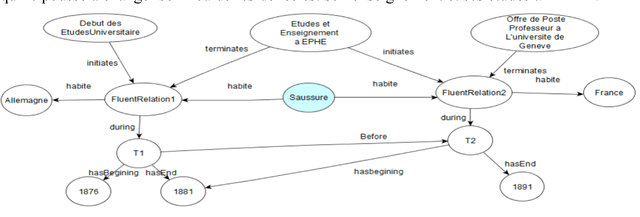
Abstract:Processing and publishing the data of the historical sciences in the semantic web is an interesting challenge in which the representation of temporal aspects plays a key role. We propose in this paper a model of temporal knowledge representation adapted to work on historical documents. This model is based on the notion of fluent that is represented in RDF graphs. We show how this model allows to represent the knowledge necessary to the historians and how it can be used to reason on this knowledge using the SWRL and SPARQL languages. This model is being used in a project to digitize, study and publish the manuscripts of linguist Ferdinand de Saussure.
Towards an Integrated Visualization Of Semantically Enriched 3D City Models: An Ontology of 3D Visualization Techniques
Apr 18, 2012
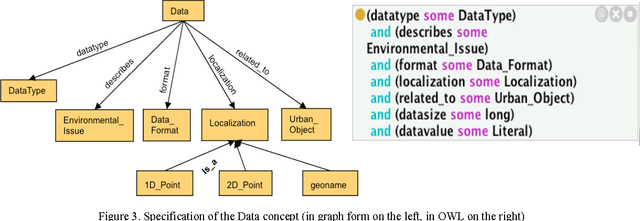


Abstract:3D city models - which represent in 3 dimensions the geometric elements of a city - are increasingly used for an intended wide range of applications. Such uses are made possible by using semantically enriched 3D city models and by presenting such enriched 3D city models in a way that allows decision-making processes to be carried out from the best choices among sets of objectives, and across issues and scales. In order to help in such a decision-making process we have defined a framework to find the best visualization technique(s) for a set of potentially heterogeneous data that have to be visualized within the same 3D city model, in order to perform a given task in a specific context. We have chosen an ontology-based approach. This approach and the specification and use of the resulting ontology of 3D visualization techniques are described in this paper.
Ontologies for the Integration of Air Quality Models and 3D City Models
Jan 31, 2012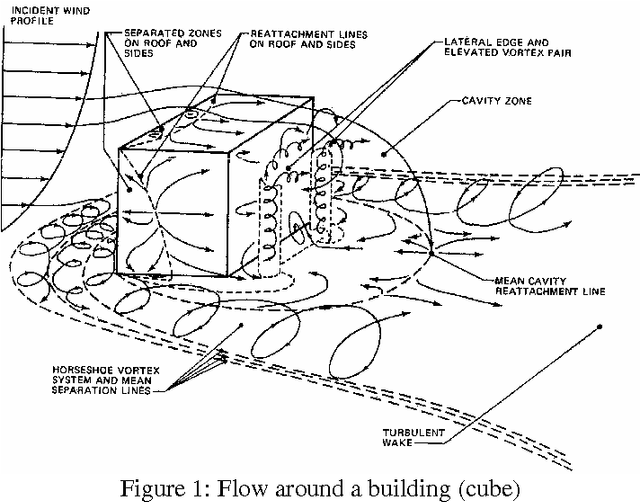
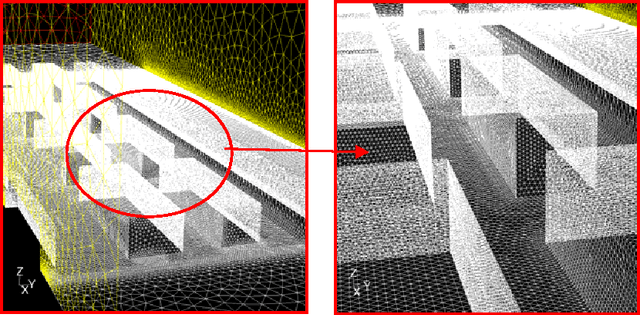
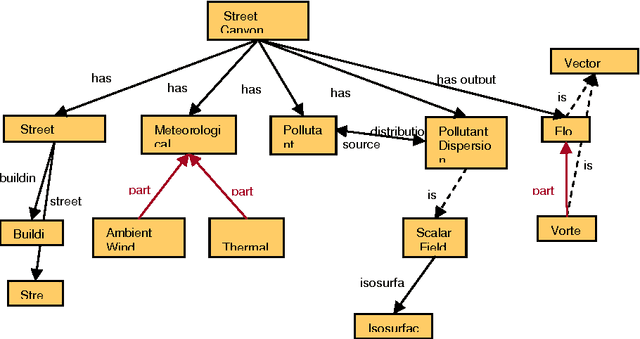
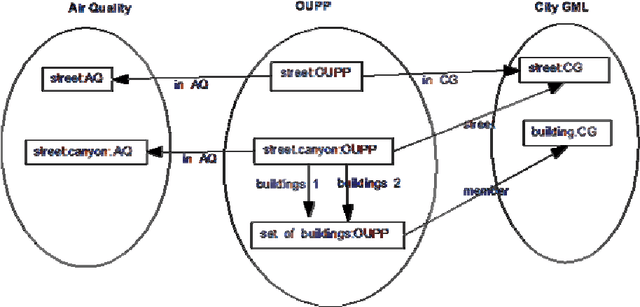
Abstract:The holistic approach to sustainable urban planning implies using different models in an integrated way that is capable of simulating the urban system. As the interconnection of such models is not a trivial task, one of the key elements that may be applied is the description of the urban geometric properties in an "interoperable" way. Focusing on air quality as one of the most pronounced urban problems, the geometric aspects of a city may be described by objects such as those defined in CityGML, so that an appropriate air quality model can be applied for estimating the quality of the urban air on the basis of atmospheric flow and chemistry equations. In this paper we first present theoretical background and motivations for the interconnection of 3D city models and other models related to sustainable development and urban planning. Then we present a practical experiment based on the interconnection of CityGML with an air quality model. Our approach is based on the creation of an ontology of air quality models and on the extension of an ontology of urban planning process (OUPP) that acts as an ontology mediator.
 Add to Chrome
Add to Chrome Add to Firefox
Add to Firefox Add to Edge
Add to Edge